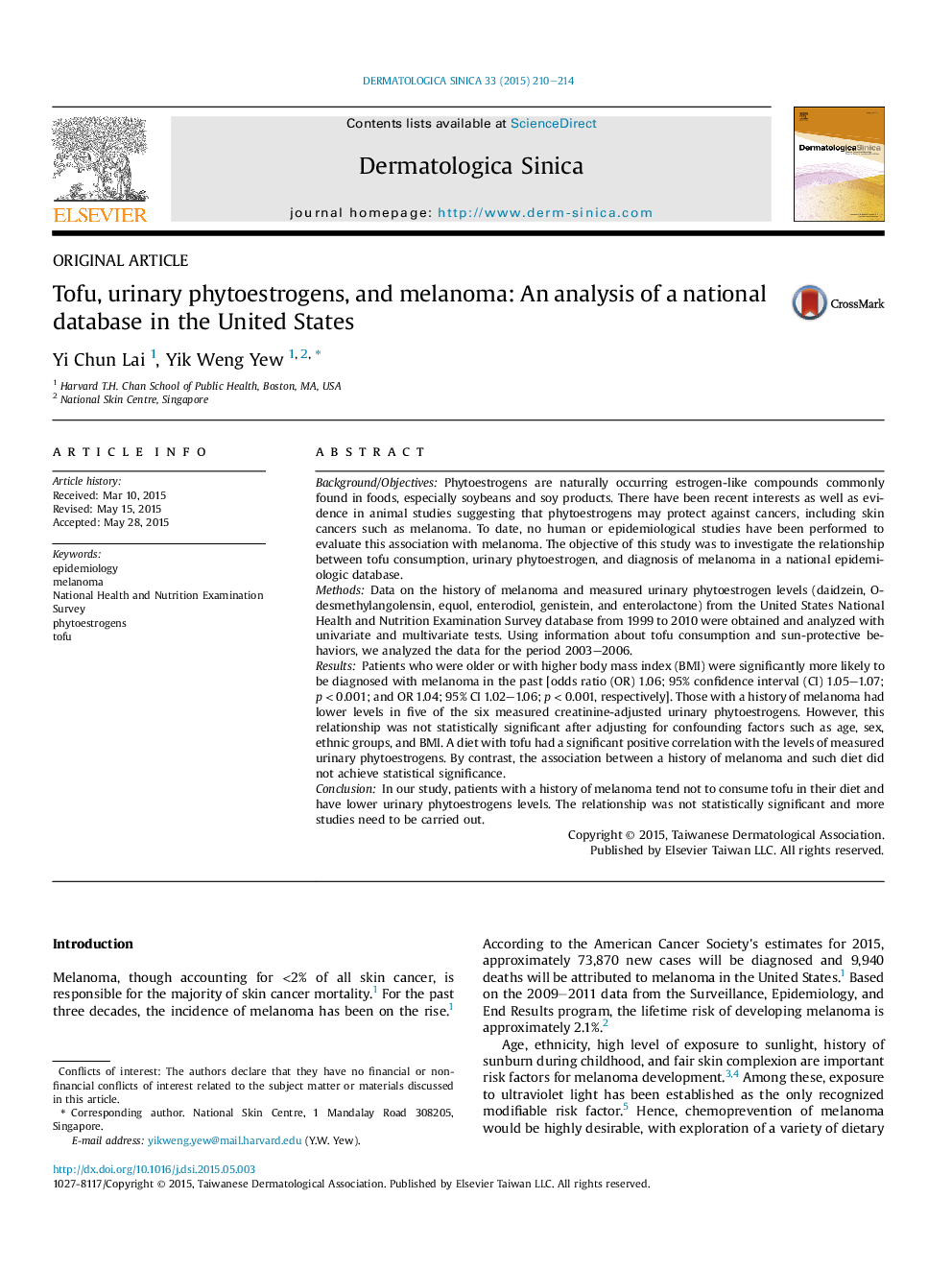| Article ID | Journal | Published Year | Pages | File Type |
|---|---|---|---|---|
| 3196417 | Dermatologica Sinica | 2015 | 5 Pages |
Background/ObjectivesPhytoestrogens are naturally occurring estrogen-like compounds commonly found in foods, especially soybeans and soy products. There have been recent interests as well as evidence in animal studies suggesting that phytoestrogens may protect against cancers, including skin cancers such as melanoma. To date, no human or epidemiological studies have been performed to evaluate this association with melanoma. The objective of this study was to investigate the relationship between tofu consumption, urinary phytoestrogen, and diagnosis of melanoma in a national epidemiologic database.MethodsData on the history of melanoma and measured urinary phytoestrogen levels (daidzein, O-desmethylangolensin, equol, enterodiol, genistein, and enterolactone) from the United States National Health and Nutrition Examination Survey database from 1999 to 2010 were obtained and analyzed with univariate and multivariate tests. Using information about tofu consumption and sun-protective behaviors, we analyzed the data for the period 2003–2006.ResultsPatients who were older or with higher body mass index (BMI) were significantly more likely to be diagnosed with melanoma in the past [odds ratio (OR) 1.06; 95% confidence interval (CI) 1.05–1.07; p < 0.001; and OR 1.04; 95% CI 1.02–1.06; p < 0.001, respectively]. Those with a history of melanoma had lower levels in five of the six measured creatinine-adjusted urinary phytoestrogens. However, this relationship was not statistically significant after adjusting for confounding factors such as age, sex, ethnic groups, and BMI. A diet with tofu had a significant positive correlation with the levels of measured urinary phytoestrogens. By contrast, the association between a history of melanoma and such diet did not achieve statistical significance.ConclusionIn our study, patients with a history of melanoma tend not to consume tofu in their diet and have lower urinary phytoestrogens levels. The relationship was not statistically significant and more studies need to be carried out.
